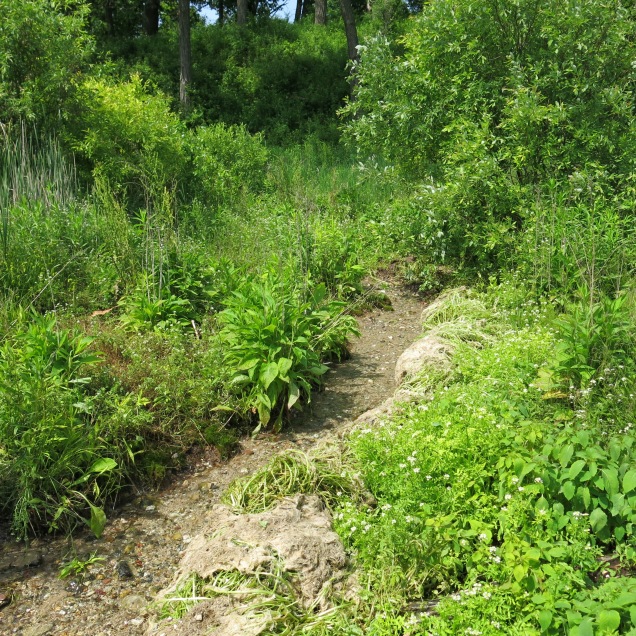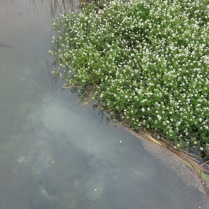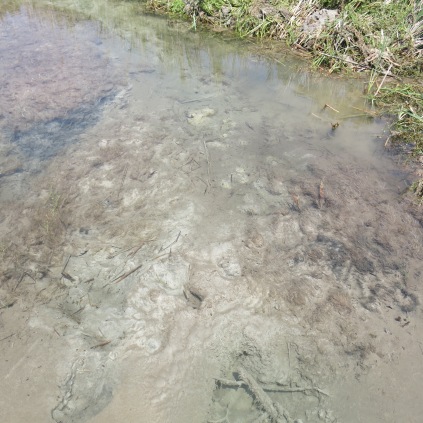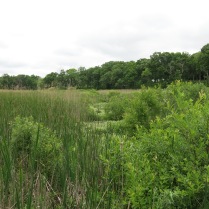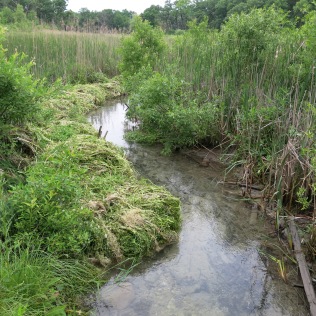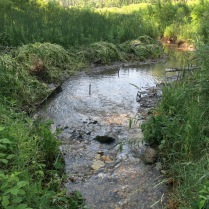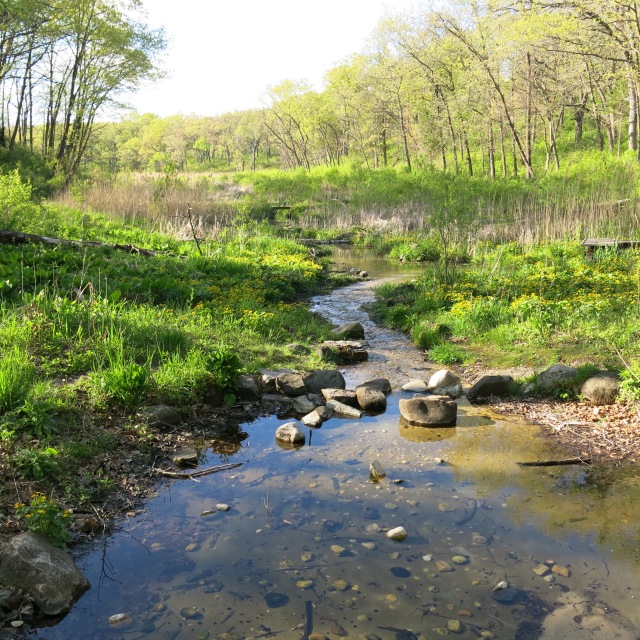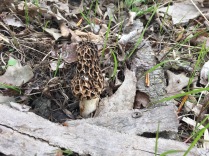The Scuppernong River was beginning to remind me of a shaggy dog in desperate need of a trim. Watercress blanketed the river from bank to bank and bed to billowing flowers overhead. Way back in 2012 Lindsay and I began pulling watercress from the river — we actually thought we were getting rid of it. Now I think that would be impossible unless one was willing to apply a huge amount of herbicide.
I pull watercress whenever it reaches the point were it begins to dam the river, which causes the flow to slow way down and the temperature to go up in what is called “thermal pollution”. I’ve been cautioned by DNR Fisheries Biologist Ben Heussner that the watercress provides cover for the native brook trout and habitat for the macro invertebrates they feed on, so, I’m not trying to get it all out; I just want to see and hear the river flowing freely.
The Scuppernong River upstream of the Hotel Spring is full of muck and marl that settled there during the 120 years the headwaters were impounded forming the upper and lower ponds.
 During the trout farming days back in the 1870’s, three additional embankments were utilized to divide the river upstream of the Emerald Spring. When the DNR drained the ponds in the early 90’s, they did not dig deep enough at each of the openings created in the embankments and the natural flow of the river remained impeded, trapping muck and marl upstream. Beginning back in March of 2015, the DNR, along with help from the Southeast Wisconsin Trout Unlimited group and The Buckthorn Man, has begun rectifying this problem by excavating rock, soil and building materials from 4 of the old embankments.
During the trout farming days back in the 1870’s, three additional embankments were utilized to divide the river upstream of the Emerald Spring. When the DNR drained the ponds in the early 90’s, they did not dig deep enough at each of the openings created in the embankments and the natural flow of the river remained impeded, trapping muck and marl upstream. Beginning back in March of 2015, the DNR, along with help from the Southeast Wisconsin Trout Unlimited group and The Buckthorn Man, has begun rectifying this problem by excavating rock, soil and building materials from 4 of the old embankments.
The only thing still holding up the free flow of the river was watercress. Watercress loves the mucky river bottom and banks and it grows prolifically at The Springs. I am hoping now, with the embankments excavated and the watercress pulled back, or out, that we’ll finally start to see the Scuppernong River flowing like it used to; and taking some of that muck and marl downstream with it.
I started pulling watercress from the Scuppernong Spring downstream to the first bridge during my recent camping adventure at Ottawa Lake.
 Over the last three weeks I have pulled watercress at the Fish Hatchery Springs, Indian Springs, Emerald Springs and the entire stretch of river upstream from there.
Over the last three weeks I have pulled watercress at the Fish Hatchery Springs, Indian Springs, Emerald Springs and the entire stretch of river upstream from there.
The Emerald Spring, the jewel of The Springs, was almost completely covered by watercress. I still have some work to do at this location…
Then I worked on the stretch of river between the Emerald Spring and the Second Bridge , which is upstream from there (check the map above).
And finally, just yesterday, I finished the last stretch between the first and second bridges. There is a gurgling rapids just below the first bridge now!
I got in a little garlic mustard pulling, and reed canary grass mowing, at The Springs.
I’ve been busy at the Hartland Marsh as well and was happy to have some help from my friend Mark Mamerow. We had intended to do our “river rat” thing, and clear downed trees from the Bark River, but the water was too high so we pulled garlic mustard instead.
The GMO miracle!
See you at The Springs!













